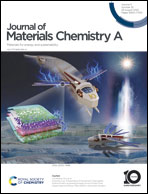A polymer genome approach for rational design of poly(aryl ether)s with high glass transition temperature†
Abstract
Nearly infinite chemical space and the absence of well-established structure–property relationships have considerably challenged the purposeful design of copolymers for specific applications. To address these issues, a data-driven method called a polymer genome approach was proposed for rational design of linear random copolymers and implemented for developing poly(aryl ether)s (PAEs) with high glass transition temperature (Tg). By means of the polymer genome approach, machine learning (ML) models with high predictive accuracies and generalization abilities were established, favourable and unfavourable genes of PAEs (i.e., molecular fragments and physicochemical descriptors) for high Tg were unearthed, and consequently molecular design strategies and mechanistic insights for developing high-Tg PAEs were presented. Experimental synthesis work further verified that the Tg of new PAEs which were designed following the proposed design strategies could reach 328 °C, standing in the top 1% of the current database containing 2794 PAEs, and the constructed ML models could precisely forecast the Tg of new PAEs prior to synthesis, simply based on chemical structures of monomers and feed ratios. The proposed polymer genome approach opens a high-efficiency and low-cost avenue for accelerating the development of advanced PAEs and is supposed to be scalable to optimize versatile properties of other genres of linear random copolymers.



 Please wait while we load your content...
Please wait while we load your content...